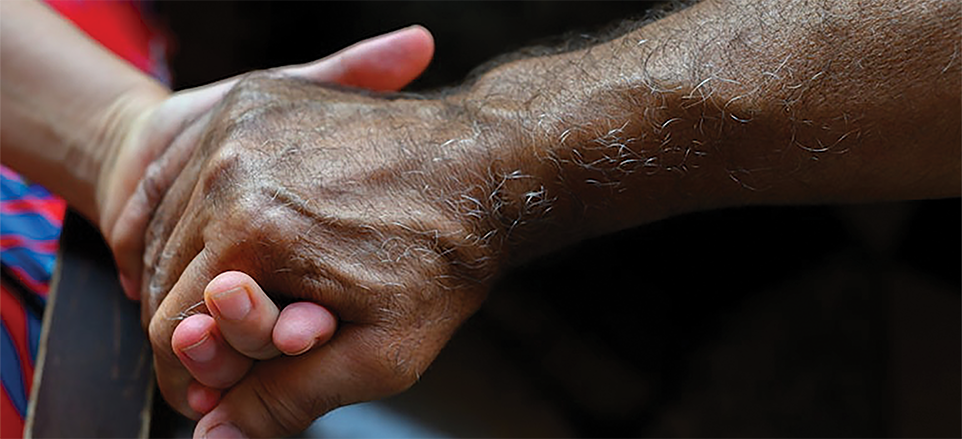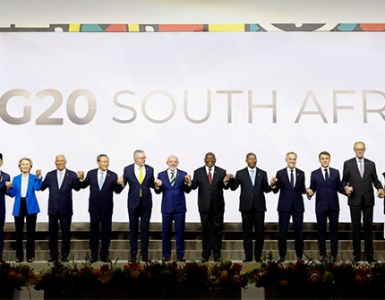PERIL: Some of the girls describe relationships with sugardaddies as empowering,offering them access to resources and social visibility…
By Monk Nkomo
Thousands of desperate adolescent girls and young women were trapped in relationships with older men, commonly known as ‘’ blessers’’ which exposed them to interrelated risks including HIV infection, early pregnancy and gender-based violence.

These shocking revelations are contained in the latest study : ‘’Sex for money : South African study reveals the harm that ‘ blessers’ can do to young women’’, by Gavin George, Programme leader in the health economics and HIV and Aids research division of the University of Kwazulu-Natal.
According to the study, transactional relationships were not just matters of individual choice. They were rooted in widespread poverty, unemployment and entrenched gender norms. For many women, having a ‘blesser’ may feel like the only path to financial security, education or social status.
The study drew data from over 3000 sexually-active adolescent and young women in eight of South Africa’s provinces , in both rural and urban environments.
‘’ We found that almost six percent of participants had had or were currently in a relationship with a blesser. Over 25 percent of the total had had or were in a relationship with an age-disparate partner five or more years older.’’ The 5, 7 percent of those having a blesser may look low but it represented thousands of young women across the country involved in high-risk relationships at any given time.
Reliance on a blesser, the study warned, could trap young women in these relationships even when they felt unsafe or unhappy.’’ I wanted to leave, but then who would pay my fees’’, one young woman was quoted as saying.
The dangers of blesser relationships also arose through power and age imbalance. Older partners often dominated decision-making . Financial or material dependence made it difficult for young women to insist on safe sex. ‘’ When he says no condom, I cant say no to him’’, one of the girls said. This was despite the fact that blessers frequently had multiple sexual partners, raising the likelihood of HIV transmission.
There was also the problem of power imbalance which meant that choices about sex, protection and fidelity often rested with the older partner not the young woman. Those interviewed spoke of initial excitement and aspiration but disillusionment later setting in.
‘’ Those engaged in both blesser and age-disparate relationships, faced higher risks of HIV, sexually transmitted infections, intimate partner violence and adolescent pregnancy than their peers who were not involved in such partnerships.’’
A “blesser” is typically an older, relatively wealthier man who provided a younger woman with money, gifts, school fees or lifestyle access in exchange for a relationship that included sex. Similar arrangements existed around the world, often called “sugar-daddy” relationships, but the South African version was closely tied to extreme inequality, youth unemployment and a culture in which conspicuous consumption carried strong social currency. As a result, “blesser” has become a mainstream, even aspirational term among some young women, particularly in urban settings.
Socio-economic issues including unemployment, also led some of these young women to have relationships with older men for support. Others believed that being seen with a blesser carried prestige without fully understanding the risks involved.
‘’South Africa ranks as the most unequal country in the world, characterised by high unemployment rates and poverty, especially among young people (aged 15-24). Getting a “blesser” was an opportunity to gain access to a new social level and often includes tangibles such as smartphones, clothing and money’’.
On the surface, transactional relationships could feel like a shortcut to independence or status. However, new evidence showed that these relationships came at a high cost.
According to the study, these relationships exposed young women to interrelated risks, including HIV infection, early pregnancy and gender-based violence. The risks all interacted and reinforced one another within contexts of inequality and limited agency.
These patterns mirrored other recent data showing that adolescent girls and young women in South Africa were twice as likely to be living with HIV as their male peers. Research over the years had shown that the drivers of this gap included biological vulnerability, gender-power imbalances, economic dependence and age-disparate sexual partnerships.
Previous research had examined why young women entered relationships with a blesser, or had explored the associated risks in specific provinces. However, what had been missing was national-level data able to quantify the scale of the problem and compare different relationship types.
‘’Our findings paint a consistent picture: while blesser relationships may offer short-term rewards, the long-term consequences for health and wellbeing are severe.
Transactional relationships include any partnership in which sex is exchanged, whether implicitly or explicitly, for material support, whether that support meets basic needs like food and transport or enables desirable extras like designer clothing or nights out. Blesser partnerships fall within this category’’.
The study revealed that while same-age blesser relationships (and these were less prevalent) appeared somewhat less risky and were associated with higher reported condom use, age disparity emerged as a key driver of adverse outcomes, particularly pregnancy.
Relationships with a blesser were potentially shaped by unequal structures of power, gender and economics that left young women with limited room for manoeuvre. Some young women however, described relationships with blessers as empowering, offering access to resources and social visibility. But this empowerment was fragile.
In conclusion, the study suggested several urgent priorities which included :
• Young people needing clear information about sexual health, power dynamics and rights.
• Economic opportunities which reduced dependence on blessers.
• Safe spaces, mentoring and counselling to help young women navigate relationships and build resilience.
• Challenging harmful norms. Engaging men, families and communities to shift these norms was as important as supporting young women.
• Securing livelihoods, equitable partnerships and supportive communities.
‘’The blesser phenomenon is not a moral failing. No young woman should be forced to choose between short-term security and long-term wellbeing.’’ – The Conversation/WSAM






























